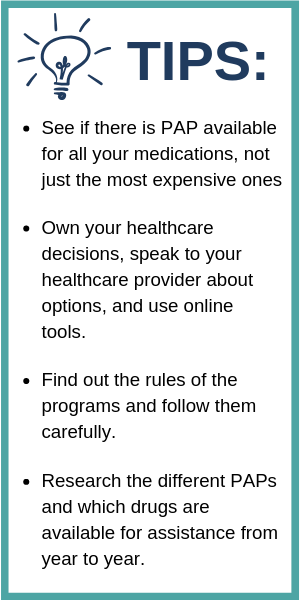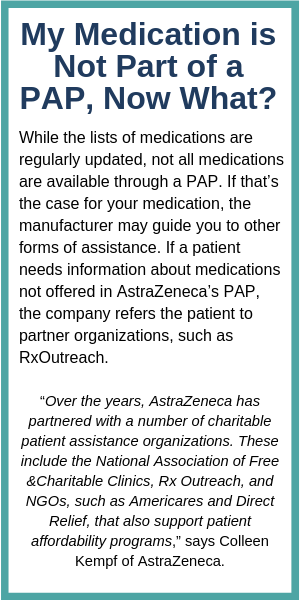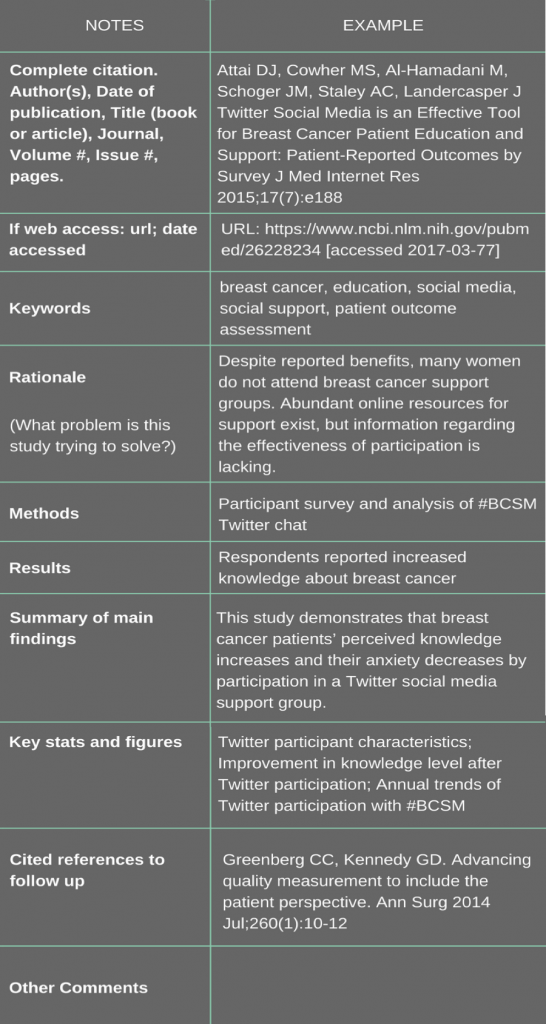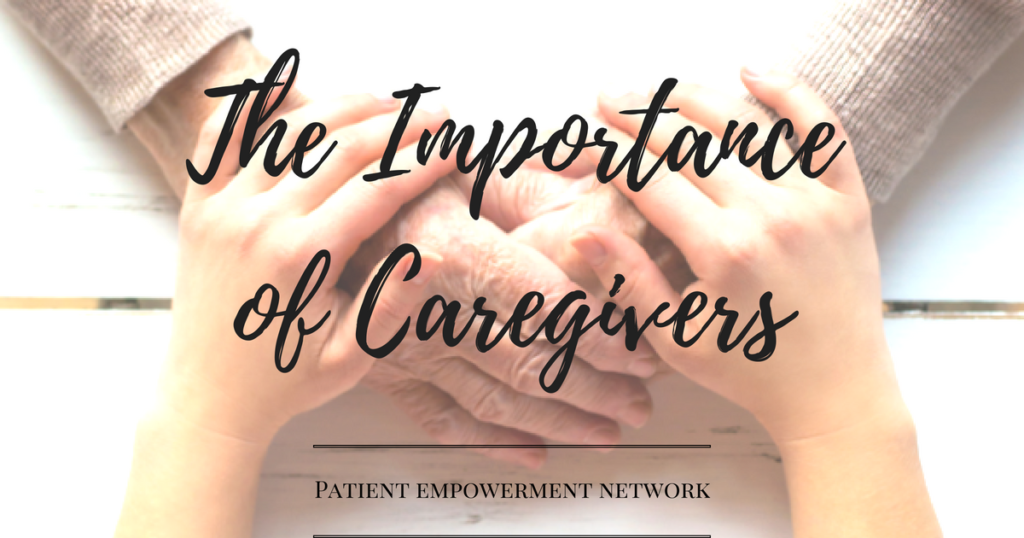As a patient advocate you may be invited to speak in public about your cause, and while some of you will relish this opportunity, many others will find it daunting. According to the National Institute of Mental Health, 74% of people suffer from speech anxiety. Surveys show that the fear of public speaking ranks as one of the most common phobias among humans. There’s even a name for it – glossophobia – the fear of public speaking. Whether you are daunted or excited by the prospect of speaking in public it pays to have a plan in place to communicate effectively. For a presentation to impact an audience and be memorable, you must structure the content, design the slides, and use public speaking techniques effectively. Next time you are asked to deliver a presentation, follow this step-by-step guide designed to help you become a more confident, prepared, and persuasive speaker.
STEP ONE: PREPARE YOUR TALK
Good presentation skills begin with thorough preparation. Here are seven tips to help you prepare for your next talk.
1. Decide what you want to say. What is the purpose of this talk? What do you want your audience to know, feel, or do after they have heard you speak? Your presentation should have a purpose, something that the audience walks away eager to do. Write down your core message in one or two clear sentences. Include a call-to-action (CTA) detailing exactly what should happen next. If you find that you have several messages you would like to deliver, challenge yourself to focus and simplify your message. Once you have a clear focus for your talk, you can then group your other ideas around it.
2. Know your audience. Who will be coming to your talk? Why are they coming to listen to you? What do they already know about the topic you will be speaking on? Find out as much as you can about your audience so you can better speak to their interests and in the language they are most familiar with.
3. Do your research. Do you want to present facts and figures in your talk? Are there any research studies you could incorporate to make your core message stronger? Use online tools like Symplur, the Journal of Internet Research (JMIR), and Google Scholar to help you with your research.
4. Structure your presentation. Now it’s time to put your key messages and research points together in a structured way. Having a structure is a helpful roadmap to keep you on track and to allow the audience to follow along with your points. Start with astrong opening, for instance, share some compelling statistics, outline a current problem, or share a memorable anecdote. If you feel comfortable sharing a personal story, this is one of the most effective ways to get your audience to pay attention. Stories leave a lasting impression on listeners. Patient advocate Martine Walmsley points to the importance of sharing your patient story because the story “behind the diagnosis is a side researchers and clinicians don’t usually see. Don’t assume they already know those details.” (Read Why Your Patient Story Matters for more tips on how to tell your patient story). Healthcare consumer representative and patient experience consultant Liat Watson advises patients to speak from the heart. “People want to connect with you and your story”, she says, “Share like you are sitting around the kitchen table”.
Next, organize your main points into an order that will make sense to your listeners. Reflect on your key points and how you might emphasise them. Finally, determine the take-home lesson (CTA) you want to close with and how you will convey this to your audience. Your CTA should transmit a sense of urgency. Why is it important they hear your message and act now? What will happen if they don’t act?
5. Add visual interest. If you decide to use slides in your presentation aim to create highly-visual slides with minimal text. Never cram information onto your slides. Instead, present one idea per slide so the audience can process each point fully before being presented with another idea. By presenting only one point at a time the information is easier to understand, and the audience is less likely to experience information overload. Avoid excessive use of bullet points, not only do they contribute to the phenomenon known as Death by PowerPoint, but they are also proven to be an ineffective method of communication for presentations. Take care when choosing fonts for your presentation– how you present your text is an important factor in making your slides clear and compelling. Type Genius is a useful tool to help you find the perfect font type and which fonts complement each other.
For a change from the usual PowerPoint presentation, consider using an alternative such as Keynote (for Mac) Prezi or Haiku Deck. Whichever tool you decide on, your slides should be visually engaging. Make good use of diagrams and charts and find some compelling images to hold your audience’s attention. When choosing an image make sure it is high resolution so that it will still look pleasing to the eye when it is blown up to full-screen proportions. Don’t be tempted to use an image you have sourced from a Google search unless the image is licensed “Creative Commons”. Instead look for images on sites such as Foter, Pixabay, and Unsplash, all of which gives you access to a bank of high resolution free-to-use photos. As a general rule of thumb, stick to one image per slide – anything more than that simply looks too cluttered. If you want to add text to a background image, choose a background with plenty of “whitespace” which will allow the text to be read clearly. If your image is lacking whitespace, try applying a blur effect or a gradient fill when you want to add text to your background.
6. Stand and deliver. Rehearse out loud using whatever slides, notes, or props you plan to use during your talk. Don’t simply practise by sitting at your desk clicking through your slide-deck; stand and deliver your talk as if you are doing it in front of an audience. Work on your voice intonation and emphasis, flow and transitions, and practise controlling filler words, like “ems” and “ahs” (Toastmasters Internationalpoints out too many fillers can distract your audience). Crohn’s disease patient, Nigel Horwood, who has spoken to a large audience of nurses at Kings College Hospital, London, UK, recommends reading your talk out loud when you are practising. “I find that simply reading through what I have written doesn’t pick up the likes of over used words or even ones that are missing. Much better to hear it being read,” he has written in his blog Wrestling the Octopus.
Modulate your speaking voice to a lower pitch (if you can do so without sounding unnatural); the deeper the pitch of your voice, the more persuasive
and confident you sound. In “The 5 P’s of Powerful Speaking for a Memorable Speech”, professional speaker Pam Warren points out that “in public speaking clarity and tone are far more important than volume in that they imply authority, a certain gravitas and above all, confidence.” When speaking on certain points you may want to stress their importance, so practise the power of the pause – a slight pause before you’re about to say something important. Take a printed copy of your text and make marks, such as a forward slash (/) or use color coding in your paragraphs to remind you to pause at key points in your talk.
The most important thing you should practise is the opening of your talk. Focus on conveying a strong, confident start which will set the stage for everything that follows. Time your presentation using a stopwatch, or one of the many free countdown timers available online. After practicing a few times on your own, ask a friend to listen to you. If you don’t want to do this, video or audio record your presentation so you can play it back and see how you might improve on delivery.
7. Final preparations. Make sure you have a good night’s sleep the night before your talk and have your clothes freshly pressed and ready on hangars. Back up your presentation to a flash drive (or the cloud), pack a plentiful supply of business cards and handouts (if you are using them). Health consumer advocate Melissa Cadzow recommends making it easy for people to follow up with you after your talk, by having a dedicated business card for your patient advocacy work. She also recommends including information on your LinkedIn and Twitter profiles and providing an email address in your presentation slides.
STEP TWO: DELIVER YOUR TALK
It’s the day of your big presentation. Plan to arrive early so you can familiarise yourself with the room, meet the technical team, check your slides are working correctly, and practice using the microphone.
When you take to the stage, resist the urge to begin speaking straight away. Take a few moments to ground yourself – set your feet slightly apart, toes pointing towards the centre back of the room (this gives you balance and is the most secure and comfortable way to stand when talking). Pull your shoulders back and down – this allows your chest to expand, so you have more breath when you begin to speak. Make eye contact and smile at your audience which will help to relax you if you are feeling nervous.
When you begin to speak, do so slowly and clearly to give your audience time to absorb your words. Remember to take full breaths between sentences.
Dealing with presentation nerves: Feeling anxious or being nervous before a big presentation is normal. If you feel nervous, focus on the fact that your audience wants you to succeed. They are on your side. You were chosen to speak and you are the expert they have come to hear. There’s no need to tell them that you are feeling nervous – people probably won’t even notice if you don’t mention it. Whenever you feel those first signs of nerves such as a racing heart, sweaty palms and shallow breathing, bring awareness to the physical sensations, take some deep breaths and anchor yourself by touching something physical, such as a table or the slide advancer, or push your weight into your toes and feet. It’s perfectly natural to feel nervous, but try to focus your attention away from your nervousness and concentrate instead on what you want to say to your audience. Recognize that nerves are a signal that this is something that matters to you. Turn your nerves into enthusiasm and passion for your topic.
STEP THREE: AFTER YOUR TALK
Spend time after the presentation to reflect on how things went. Ask yourself (or others) what you thought went well and what could have been better? Take some notes on which techniques worked to help calm your nerves, which stories resonated with the audience, and how you answered any questions in the Q&A. The purpose of this exercise is to become a better presenter the next time you are asked to give a talk, by putting the lessons you learn each time into practice. Take every opportunity you can to practise speaking in public. Not only is it an important way to get your message out into the world, but mastering the art of public speaking is a wonderful way to boost your personal and professional confidence.
Editor’s Note: For another creative presentation design tool, please check out Canva.
A Stanford Medicine X e-Patient scholar, Marie Ennis O’Connor is an internationally recognized keynote speaker, writer, and consultant on global trends in patient engagement, digital health and participatory medicine. Marie’s work is informed by her passion for embedding the patient voice at the heart of healthcare values. She writes about the experience of transitioning from breast cancer patient to advocate on her award-winning blog Journeying Beyond Breast Cancer.

 Each company has a different process for enrolling in its PAP. Some applications require extensive financial information, while others require basic information; Some require doctors to fill out a portion of the application, while others only need a signed prescription. Miller says for the Genentech enrollment process, he had to provide his financial information and that the application had two or three pages for his doctor to fill out. Rosenguard says the Celgene application process was extremely simple and that it took about two weeks for him to be accepted into the program.
Each company has a different process for enrolling in its PAP. Some applications require extensive financial information, while others require basic information; Some require doctors to fill out a portion of the application, while others only need a signed prescription. Miller says for the Genentech enrollment process, he had to provide his financial information and that the application had two or three pages for his doctor to fill out. Rosenguard says the Celgene application process was extremely simple and that it took about two weeks for him to be accepted into the program. PAP Basics
PAP Basics




